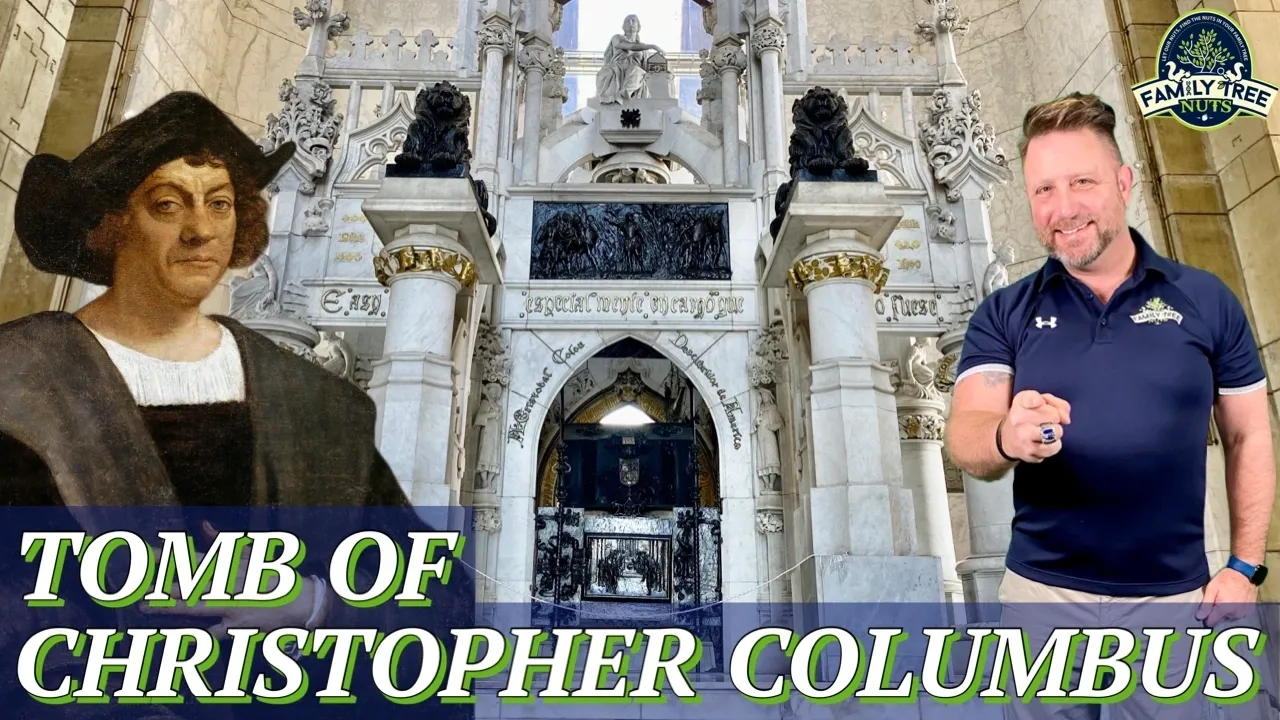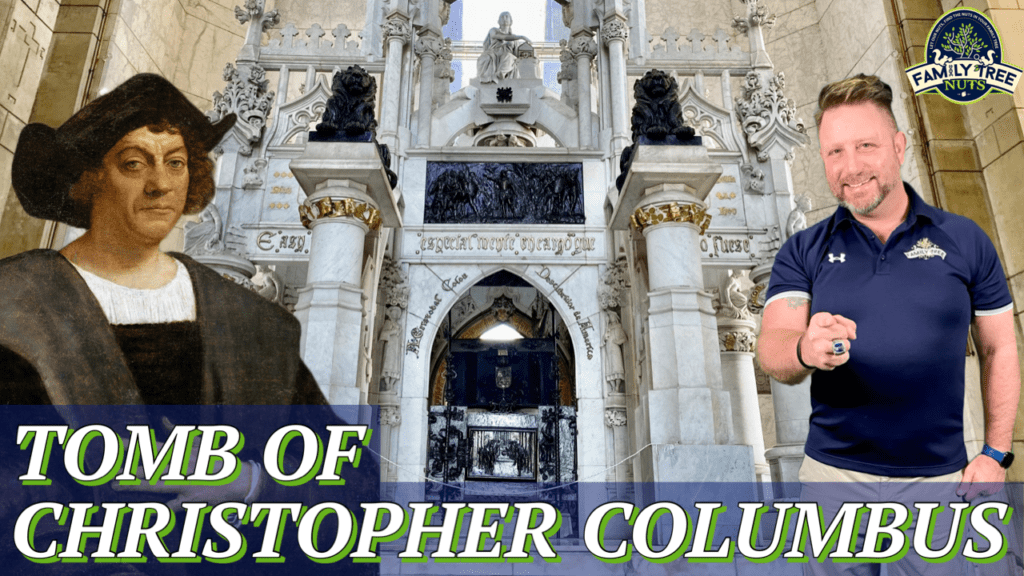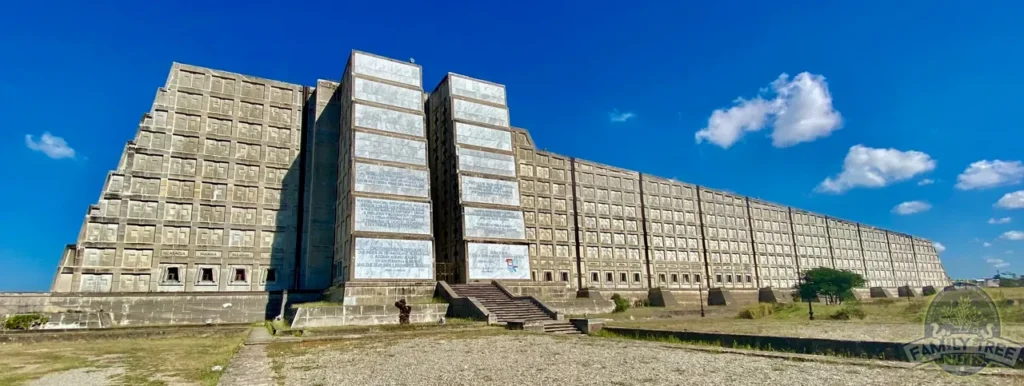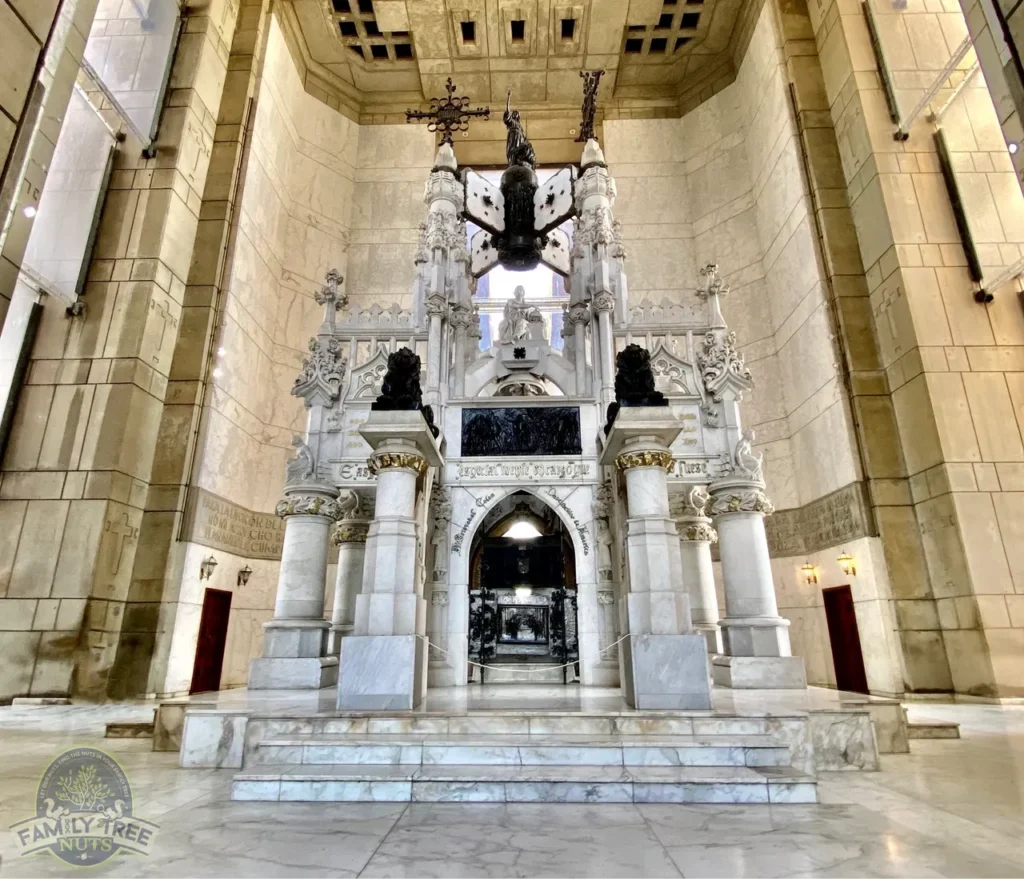
TOMB OF CHRISTOPHER COLUMBUS! OR IS IT?! FARO A COLON HISTORY!

Inside this giant lighthouse is the tomb of the famous explorer Christopher Columbus. Wait, I thought he was buried in Seville, Spain? There are few things more exciting and interesting to history nerds like myself than a little historical controversy. In this article, we will not only get into this controversy, but we will also tell you the fascinating story and give you a tour of this incredible site, Faro a Colon, or the Lighthouse to Columbus.

Recently, we visited the Christopher Columbus’ tomb, in Santo Domingo, Dominican Republic, in the Caribbean, and we wanted to share its history with you. The Faro a Colón or Lighthouse to Columbus is considered a mausoleum monument. Plans for the monument were first made in 1931 by an architect from Scotland named J.L. Gleave but the plans were not put into action until in 1986. It was inaugurated in 1992, the quintennial of when Columbus became the first European, besides the Vikings, to discover the New World. Yes! I know how controversial that statement is, but that’s not the point of this article.
The monument was paid for by the Latin American countries at the cost of about $70 million. The monument is in the shape of a cross representing the Christianization of the Americas. Its light is made up of one hundred and fifty-seven beams, and is so bright, it can be seen all the way in Puerto Rico, and from outer space. Under the light, is the magnificent tomb of Christopher Columbus.
The outside of the structure is adorned with quotes and names of the countries in the New World, and decorated with crosses. In front of the monument are views of downtown Santo Domingo overlooking the historic section as well as more displays for the monument. Besides the tomb, the inside of the monument contains a chapel. Down the long corridor of the cross are rooms dedicated to each Spanish speaking country and contains a museum relevant to each of them. It is a truly breath-taking place.
Now on to the controversy of is Christopher Columbus buried here or not? Columbus had told many people that he wanted to be buried in the Americas, but when he died on 20 May 1506, he was originally buried in Valladolid, Spain. Three years later he was moved to a monastery outside of Seville, Spain. Maria de Toledo, the widow of Christopher’s son Diego sent the bones of her husband and those of Christopher to be buried in the cathedral at, Santo Domingo, Dominican Republic.
The remains stayed at the Cathedral until 1795, when the whole island of Hispaniola became under the control of France. The Spanish were worried about Columbus’ remains being under the control of the French and moved them to Havana, Cuba, and when the Spanish-American War broke out in 1898, they were moved back to Seville, Spain. Ok, this solves it right? Columbus’ remains are in Seville. But wait…

In 1877, during a renovation of the cathedral in Santo Domingo, the workers found a box made of lead that contained bones. The box was inscribed with the words, “Illustrious and Distinguished Male, don Christobal Colon”. This is why the Dominicans state that they have the correct set of remains. They say that Spain got the wrong bones!
The Dominican Republic states that the remains of Christopher Columbus are entombed under the light. Spanish authorities state that DNA tests have proven that Columbus’ remains are in his tomb in Seville, Spain. After the DNA evidence was presented, the Dominican Republic stated that it is possible that some of bones entombed there could still be those of Columbus. At present time the Dominican Republic has refused to DNA test their remains. I mean, let’s face it, the Dominican’s have nothing to gain by performing the test. Every year on Columbus Day, the remains are displayed in the crypt.
What do you think? In your opinion, who has Christopher Columbus’ remains? Does it even matter? No matter what, the lighthouse monument is certainly an icon representative of him and his accomplishments. Also, this isn’t the first time that we’ve done videos about a man that has two graves. Check out our videos from both of Daniel Boone’s graves, one in Kentucky, and one in Missouri.
So, there you have it, the history of the Faro a Colon, the Lighthouse to Columbus. What do you think? Have you visited here before? Did you know any of this story before or after you visited? Have you now added this location to your bucket list? We’d love to hear from you and please let us know what you think in the comments below. Also, be sure to see our other historical videos from Santo Domingo, Dominican Republic. We have a video from the Alcazar de Colon, also known as the Fortress of Columbus, the home of Christopher’s son Diego. We also have a video of the main historical things to see in Santo Domingo.
The Lighthouse and Tomb of Columbus is one of those places that most people have never heard of but it is one of the few places in all the Western Hemisphere where you can touch history that is half a millennium old. We are proud to help preserve the stories and share them with all of you. Be sure to see our video below from here.
-Col. Russ Carson, Jr., Founder, Family Tree Nuts
